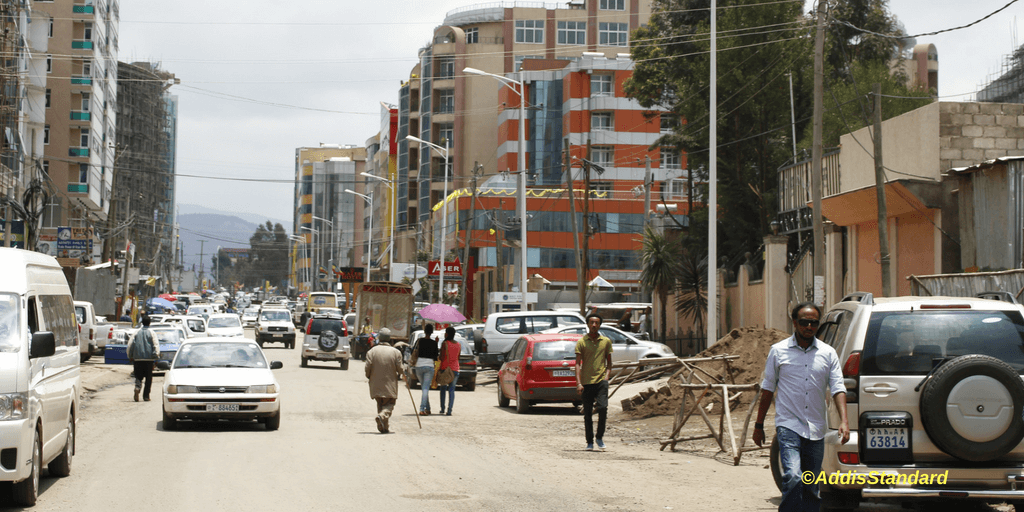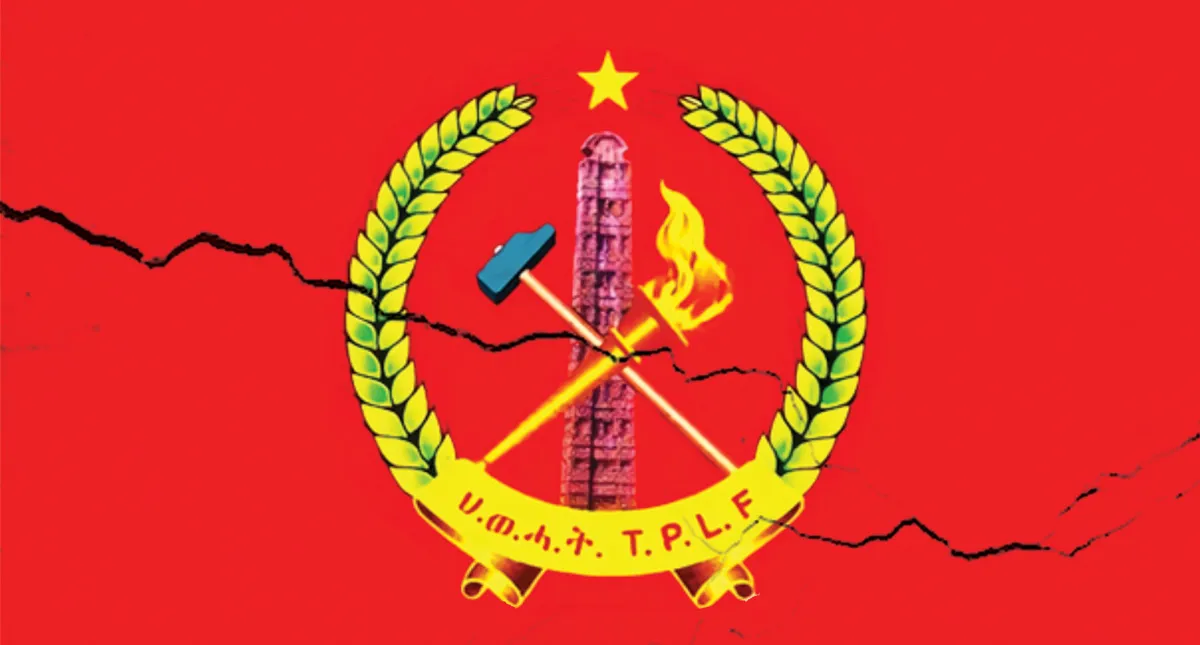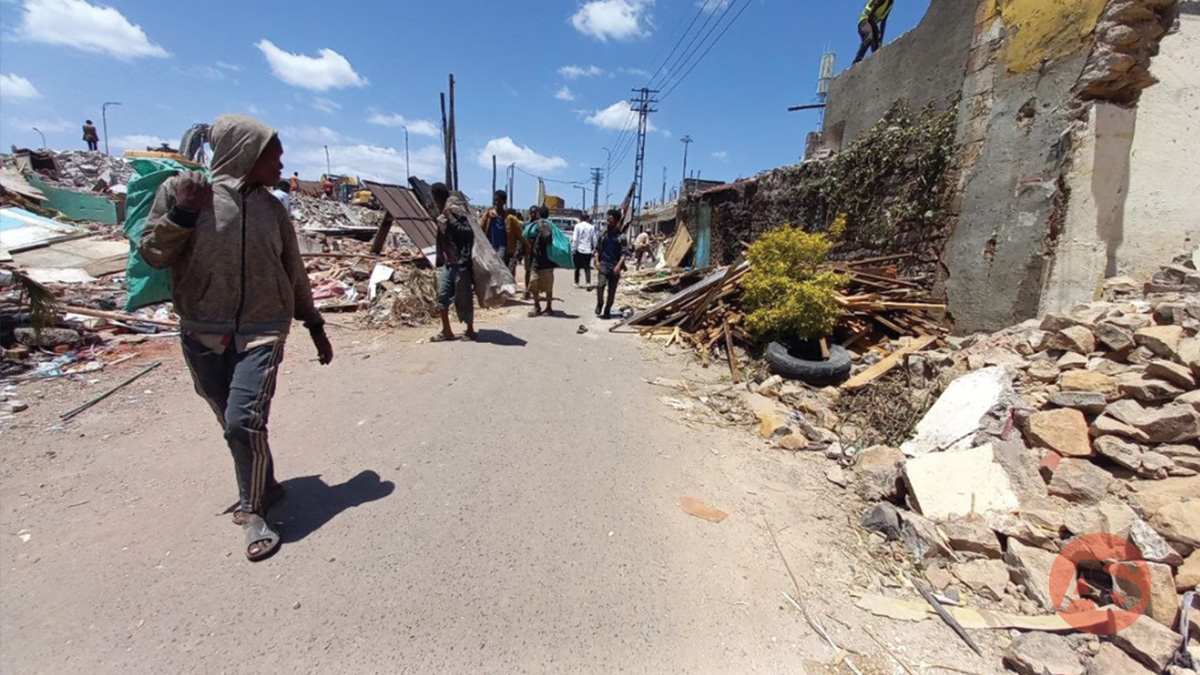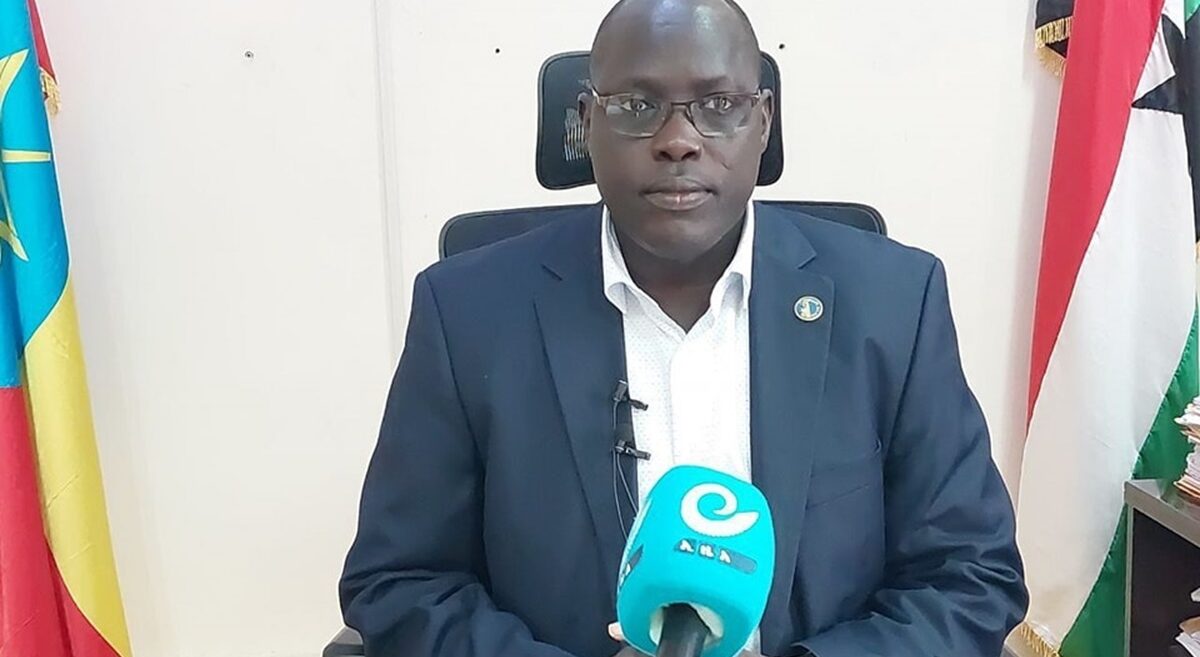Analysis: Storm on Ethiopia’s Doorsteps: Tackling convulsions in the greater Middle East and Northeast Africa
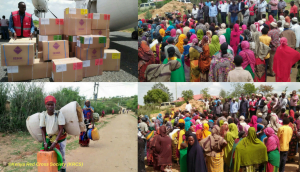 The latest crisis in Ethiopia following the killing of civilians by army members in Moyale has so far displaced above 40, 000 Ethiopians
The latest crisis in Ethiopia following the killing of civilians by army members in Moyale has so far displaced above 40, 000 Ethiopians
Hassen Hussein, For Addis Standard
Addis Abeba, March 21/2018 – Preoccupied by the internal upheavals that their own country is undergoing, Ethiopians can be excused for largely ignoring the storm gathering at their doorsteps. As alliances and counter-alliances pockmark the greater Northeast Africa and Middle East, regions from where state fragility is radiating outward, the country’s leaders are eying to exploit the payoffs—oblivious to the threats.
Ethiopia isn’t merely dependent on Middle Eastern oil but also on the hard-currency harvested from its huge migrant labor there. The loss of this lifeline due to the ongoing geopolitical realignment is enough to produce an economic shock to rival the political one already underway at home for three years running. Internal regime vulnerabilities are the most common source of the regional conflagrations that is the focus of this piece. Ethiopia’s elite dominated autocratic regime is facing a myriad of internal and external challenges that could be compounded by the regional convulsions. While talk of reform is in the air, coupled with signs pointing in conflicting direction, it is inconceivable for Ethiopia’s deep state to give up power and for its oligarchs to lightly forfeit their entrenched economic advantages. In fact, aside from the dangers posed by the declaration of another state of emergency (SOE), the risk of rogue kleptocractic generals taking matters into their hands – if not for anything else, but for their own survival – is too great a risk to ignore. One thing is for sure: That step would be met with a popular rejection—if not outright regional and international condemnations. But if the ensuing conflict turns into sustained instability, it risks inviting foreign interventions from near and far into what could definitely become a vortex in a region that is no stranger to long-armed interventions.
The concurrent materialization of three probable events is enough to set this in motion: Eritrea goes after Badme; Egypt after GERD; and protests in Oromia and Amhara graduate into armed insurrections fueled by the establishment’s desire to reassert control through the SOE. Violent conflict between the Ethio-Somali state and Oromia reignite or Ethiopia’s deep state goes for a power grab putting out all flickers of reform.
After analyzing the larger forces knocking at Ethiopia’s doors, this piece offers a few short-term and long-term recommendations for the country’s policy makers, both in government and the opposition, on how to tackle them. These recommendations are conceptualized within the context of the country’s and the region’s historical, geopolitical, and institutional legitimacy deficiencies that inform the stubborn vulnerabilities that have become endemic to the Ethiopian state.
Ethiopia, Northeast Africa, and the Middle East
Northeast Africa and the Middle East are undergoing major convulsions. But consumed by the internal convulsions of their own, Ethiopians are largely ignoring the storm gathering at the country’s doorsteps. Ethiopia is a country with a conflicted geography – Northeast African by choice and Middle Eastern by circumstances. To a casual observer, the two are different geographic regions walled off from each other by the Red Sea as well as vast stretches of desserts. In reality, they share close social, cultural, and economic affinity dating back Millennia as to compose a deeply intertwined distinct neighborhood. Gateways to the outside world to the innlands of their respective continents, Northeast Africa and the Middle East are culturally products of same crisscrossing currents. The greater region is also part of the Mediterranean world and vice-versa – an arena where rival empires and civilizations vied for dominance.
Some of the great rivers on which ancient civilizations thrived – reverently known as the Nile, Euphrates, and Tigris – happen to be in this greater region. And still, it is the one region where the distribution of water resources is so starkly uneven between states that talk of water wars cannot be dismissed as sensationalist bluster. As a cradle of humankind, it means its land is over-cultivate – its food-producing capacity depleted. As the source from which all major world religions sprung, it is a scene of strong convictions and many strongly-held beliefs. As home to the energy fueling the post steam-power economy and a vital waterway for 13% of the world’s trade, it is the theater where the influence of distant powers is projected and strongly felt – where the powerful and mighty curve out spheres of influence. In short, a confluence of currents reverberating from around the wide world. And yet, it is today the nucleus from which state fragility is radiating outward.
As such, this is among the most strategic and complicated of regions. One of the primary consequences of this is the blurring, rather disappearance, of distinctions between what is intra-state, inter-state, regional, and international. The other is constant fluidity and volatility. Last but not least, the frequency of foreign interventions and internal wars.
The players
All three of the world’s military powers – the United States of America, the People’s Republic of China, and the Russian Federation – are increasing their already active presence in the greater region. Their military, economic, and geopolitical concerns permeate the states of the region. Aside from protecting its strategic ally, the state of Israel (a regional pariah), the US maintains a huge footprint – turned into a permanent engagement with the 2003 invasion and occupation of Iraq. After withdrawing from the region – literally packing and leaving – with the demise of the Soviet Union, Russia signaled a dramatic return with its Syria intervention. China’s interests are not limited to securing the vital waterway through which the oil that feeds its insatiable appetite for growth flows. No other great power is as heavily invested in the region. Hence, why this “nation of peace” established its first overseas military base here—in Djibouti—already host to six such bases.
Whatever gap is left by these global hegemon is filled by key regional powers—Saudi Arabia, Iran, Turkey – each bolstered by its state and non-state actor allies. Born of the fears triggered by the youth-led grassroots activism inaugurated by the Arab Spring, the Saudi-led alliance, comprising mainly the United Arab Emirates (UAE) and Egypt, is concerned primarily at blunting the undying influence of the Muslim Brotherhood, bred in Egypt but whose ideology transcends the pharaonic nation. The chief global patron of this alliance is Trump’s America. Whereas the Saudi-led alliance drew bone chilling fear from the Arab Spring, the Turkey-led alliance, currently comprising only Qatar, a financial powerhouse dubbed a modern Sparta, was inspired by it and still pained by its disastrous end. Turkey, a NATO member has two other motivations. First, containing the emergence of a viable Kurdish State out of the chaos triggered by the US invasion and occupation of Iraq and its untidy aftermath- a fear also shared by Iran. Worth noting here that the net beneficiaries of the US intervention and continuing presence are the Kurds and Iran. Second, shunned for membership by the European Union, Turkey under AKP invested for over a decade the proceeds from its previously booming economy into the economies of the greater neighborhood. Perhaps next to China, Turkey is the second most invested. In fact, Turkey under Erdogan resurrected the Ottoman Empire’s old sphere of influence in the region, projecting a soft power that married moderate Islam with democracy and economic rationality. The alliance led by Iran, on the other hand is motivated by two considerations. First, exploiting the huge gulf opened up by the sudden fall of its archrival, Iraq’s Saddam. Second, breaking free from US and European economic sanctions and embargo imposed following the 1979 Islamic revolution.
The third rank of players are the coastal countries which have become theaters of war, military bases, and intense diplomatic engagement-mainly Yemen, Eritrea, and Somalia. A Kikuyu proverb says that when elephants fight, it is the grass that suffers. The Saudi-Iran power play has already turned Yemeni grass into dust. Unaligned Ethiopia is currently on the lookout for any payoffs. However, growing internal troubles could invite more threat than opportunity.
A comment or two are in order here about the nature of these alliances. First and foremost, they are shifting. For example, Sisi’s Egypt once almost fell out with the Saudi monarchy only to elevate relations later. Second, the dividing lines between alliances are not as clear cut as usually presented. For example, despite its generally hostile posture toward Iran, the US looked the other way as Iran propped up the Iraqi and the Syrian regimes. While reluctantly tolerating these interventions, the US finds Iran’s belligerent rhetoric towards Israel, not to mention Iran’s nuclear ambition, intolerable. Third, the leaders of the countries in the rival alliances are either new (Egypt and Saudi Arabia) or long in power and thus struggling to maintain their grips. As such, their priorities and idiosyncrasies explain more about the conflagration than their carefully articulated ideological justifications.
Lenses
There are at least three lenses through which the new conflagration in the Middle East-Northeast Africa region is being conceived. According to the most common view, this is simply a clash between Sunni and Shia powers. Where this simplistic logic falls apart is in its failure to explain why Sunni Turkey and Qatar are aligned with Shi’a Iran and not with Saudi Arabia.
The second view, conspiratorial in its bent, holds that the mess is the handiwork of the US, and its wily ally, the state of Israel, to saw discord in the Arab/Muslim world – Sunni vs. Shia and Turk vs. Kurd vs. Arab vs. Persian – so as to create weak and fragile states that could in no way endanger the interests of both the US and Israel. This lens however fails to explain why a longtime US ally and NATO member, Turkey, and Qatar, home to the US’ largest naval base in the region, are cozying up to Iran and Russia. It also discounts the autonomous motivations of regional powers and their inherent strengths – sometimes to even go as far as standing up to the great powers when it comes to safeguarding their immediate strategic security and economic interests. As a matter of fact, it is partly this same motivation that is animating Russia’s and Turkey’s renewed forays into the region and beyond.
The third view contends that this is rather a case of weak states with weak governing institutions extending their security perimeters outward to preempt and confront real and potential threats. These weaknesses include the inability by undemocratic regimes to effectively deal with the explosive issue of the youth bulge – too many unemployed highly educated youth that could be instantly and easily mobilized for all kinds of causes through the convenience provided by social media technology. And also a case of domestic players lacking legitimacy seeking external patrons to secure their hold on power or gain it. Last and most importantly, this is partly a case of countries awash with oil and gas money, and whose restive population are used to a luxurious lifestyle for decades, acting out of concern as to what happens when the oil and gas fields run dry or when technology and climate change make fossil fuel less desirable. The defect of this lense is the tendency to discount outsiders’ influence and the interplay between internal and external factors.
While no single lens provides sufficient explanation, each sheds light on aspects of the conflagration. Perhaps a more holistic and eclectic approach could provide a sharper lens through which to make sense of the newly evolving reality within the context of the region’s long history. The Sunni-Shia schism has always served as an unspoken undercurrent during bad times. Resentments of past Persian and Turkish domination runs just under the skin—as does enduring Arab influence arriving on the advent of Islam. State fragility owing to the colonial past is a constant—as is enduring interest by global powers. Talk of a “clash of civilization” has brought back religion as a bone of contention. While Christianity has lost its stranglehold on individual opinion in both the US and Europe, albeit still a defining and yet latent ingredient in national and racial/civilizational identity formation, it enjoys a revival in Africa as does Islam. Fear of a resurgent Islam in its heartland and in Europe has returned as a catalyst to mobilize domestic opinion—a slide reminiscent of the Middle Ages.
Egypt and Ethiopia – with Eritrea in the Middle
Unlike the other countries of the greater region, the backbone of the economies of these three isn’t oil/gas. Ambitions aside, none are industrialized and industrializing. Both Egypt and Ethiopia openly entertain regional leadership ambitions, ambitions that could not be supported by their agriculture-driven economies. While Ethiopia’s agriculture is rainfed, Egypt’s relies on large-scale irrigation. While Egypt’s is exclusively fed by a single river, the Nile, that originate out of Egypt and mostly from Ethiopia, the latter is finding it difficult to feed its fast growing and huge population on rainfed agriculture alone. Any reduction in the Nile waters, say due to increased irrigation or dams by Ethiopia, means starvation in Egypt and food riots in its megapolis. Having overcome one revolution, the generals can’t risk another. While predominantly agrarian, Ethiopia is in a hurry to stake its place in the sun to preempt a slow-gathering Malthusian tsunami. The region being within the crosshairs of the fast-galloping climate-change threat, which is already becoming real in parts of the region, access and control of vital water resources becomes a matter of life and death. While the bickering over control of the Nile define Ethio-Egyptian relations, a border dispute and competing visions of regional dominance define Ethio-Eritrean relations. Ethiopia blames Eritrea as a conduit for Egyptian meddling in its internal affairs—as Eritrea blames Ethiopia for its international isolation.
The Sudan
The case of the Sudan needs to be looked at differently—being the only oil producing on its side of the coast. Like Ethiopia, one of Africa’s oldest states, experienced a breakup when its former northernmost province, Eritrea, broke off to form a separate country in 1993, the year 2011 saw Sudan, also one of Africa’s largest and oldest states, become two countries. The end of the long war was meant to usher in a new era of peace. But this didn’t materialize. The two Sudans are each facing internal implosions. South Sudan is mired in internecine war and already a failed state—quite a feat coming within a decade of its making. Although the scale and intensity differ, both are abuzz with active rebellion. Internationally, Sudan is yet to shed its pariah state status and the behavior of the regime, in power for close to three decades, is informed by these internal and external vulnerabilities. Its peace is anchored by its close cooperation with the regime in Addis Abeba – the longest peacetime between the two traditionally rival states. Soured relations with Eritrea provide the other cement to bind the two regimes together.
With respect to the regional conflagration, Sudan is allied with Turkey- to ward off any threat from Eritrea and Egypt, who are in a serious courtship lately. Aside from their enemity to Ethiopia, existential fear of resurgent homegrown Islamist movements may inform their external agenda—hence the budding relationship with Saudi Arabia.
Storm on Ethiopia’s doors
Ethiopia isn’t dependent on the Middle East just for oil alone. The country would be even more hard-currency starved had it not been for the remittance from its huge migrant labor in the Middle East. The loss of this lifeline alone is enough to produce an economic shock to rival any. However, Ethiopia’s current autocratic leadership is not paying enough attention to the impact of these convulsions.
Ethiopia is not immune from what is going on in the greater Middle East. The Houthi-connection has brought Iranian influence to the Red Sea shores. Although the Muslim portion of the other side of the coast is predominantly Sunni and supposedly off limits to it, Iran is not without potential friends further afield. One could reasonably speculate that the Saudi-inspired drive to raze down shrines in Ethiopia isn’t driven exclusively by religious zealotry. Some have opined “Could this be a preemptive strike against Iran?” There is no way to answer this question. However, should the situation in Ethiopia morph into sustained chaos, Saudi Arabia, Iran, and Israel would find it hard to keep their hands off. As long as the threat from Somalia’s Al-Shabab simmers, US need for regional proxies is unlikely to subside anytime soon.
Memories superpower rivalry during the Cold War raise fears of the Syria example repeating in the Horn as well. Had it not been for robust Russian and Iranian incursions, Syria’s minority Alawites, in power for decades, would have found it impossible to withstand popular Sunni resistance as well as the attack from the Islamic State (former). It is important to remember that deteriorating US-Russia relations is the background informing Putin’s decision to intervene decisively in Syria. And one need to be cognizant of the fact that internal regime vulnerabilities are the most common source of the regional conflagrations that is the focus of this piece.
Ethiopia’s Tigrean-dominated regime is facing a myriad of internal and external challenges. While talk of reform is in the air and signs are pointing in a conflicting direction, it is inconceivable for the Tigrean establishment to give up power and its entrenched economic advantages easily. In fact, aside from the dangers posed by the declaration of another state of emergency (SOE), the risk of rogue generals from this minority community taking matters into their hands and putting out the flicker of reform—if not for anything else, but for their own survival—is too great a risk to ignore. One thing is for sure: That step would be met with a popular rejection if not international condemnation. But if the ensuing conflict turns into lingering instability, it risks inviting foreign intervention from near and far into what could definitely become a vortex. The region is no stranger to such long-armed interventions. The concurrent materialization of three probable events is enough to set this in motion: Eritrea goes after Badme; Egypt after GERD; and protests in Oromia and Amhara graduate into armed insurrections fueled by the establishment’s desire to reassert control through the SOE. Violent conflict between the Ethio-Somali state and Oromia reignite or Ethiopia’s deep state goes for a power grab putting out all flickers of reform!
Conclusion
While foreign interest in the region is a huge factor, the key issues driving the conflagration are largely internal state and regime vulnerabilities. These include weak states; weak state and non-state institutions; illegitimate institutions and regimes; the youth bulge and state failure to create jobs and expand opportunities; and states being clueless in the face of the gathering storm of the rapidly growing pace of the climate-change threat. Undemocratic Ethiopia is in the thick of it all when it comes of these challenges—both internal and external—and dangers. Hence, the need to attend to the storms gathering at its doorsteps.
Recommendations
The challenges are both short-term and long-term. If one is trying to protect Ethiopia from any fallout from the regional conflagration discussed above, the following could be considered as viable steps in the short-term: Promoting national understanding and avoiding tactical errors by the opposition as to give a dining regime the excuse it needs to renege on promises of reform and temptations by the deep state to cling to absolute power indefinitely thereby exacerbating Ethiopia’s vulnerabilities; more procrastination on reform increases risk of a prolonged conflict. Hence, the need to bring it to a speed closure forcing EPRDF to either reform or be seen to be unmistakably against it; at par with elevating the diplomatic campaign with the US and the European Union, more formal overtures to both Russia and turkey should also be seriously considered; while lacking Turkey’s soft power, Israel has shown greater interest in Africa in general and the Horn of Africa in particular. While lacking Turkey’s investments and soft power, Israel has a sizable population of Ethiopian heritage. Given the Israeli interest on the country, it is imperative and high time to explore how this connection could be utilized to create a few bridges in case things deteriorate beyond recognition—which is not only not impossible but also probable.
In the long-term, dealing with Ethiopia’s long standing internal vulnerabilities on a sustainable basis is a crucial matter for the country’s survival. Some of the recommendations include but not limited to: putting the very legitimacy of the Ethiopian State on a firmer, wider and more consensual and durable legal and constitutional foundation; disciplined reform of all state institutions with the view to making them accountable, transparent, legitimate, representative, professional, autonomous, responsive, and resilient; tackling the climate-change threat by elevating the agenda to a national priority; devising an economic policy that makes employment-creation, especially for the youth, a matter of national security; nurturing creativity and innovation and critical thinking and wisdom among the youth to address the country’s vulnerabilities; stable and internally peaceful neighbors make great neighbors. Ethiopia can not afford so many weak, fragile, and collapsed states in its immediate neighborhood and thus needs a robust regional strategy that isn’t clouded by the incumbent regime’s insecurity and its undying ambition to cling to power indefinitely by extending its security perimeter that continues to creep outward from one crisis to the next; Ethiopia’s reliance on the Middle East – especially Gulf countries – is multidimensional. However, Ethiopia’s relation with this vital region is defined by outdated prisms. It is high time for the country to properly define and refine its relations. AS
ED’s Note: Hassen Hussein, a writer and Ethiopia/Horn of Africa Analyst, teaches Leadership and Management Courses at Saint Mary’s University of Minnesota.



